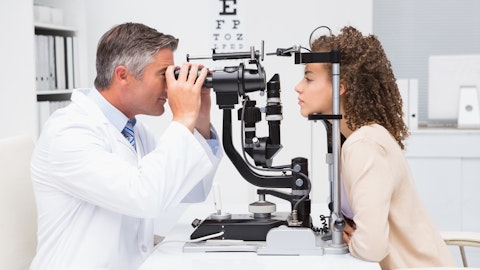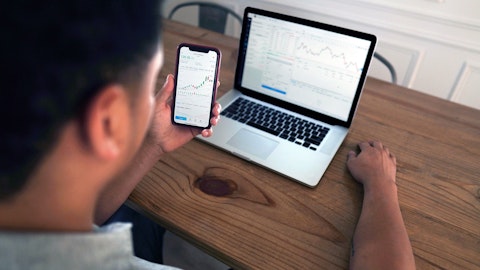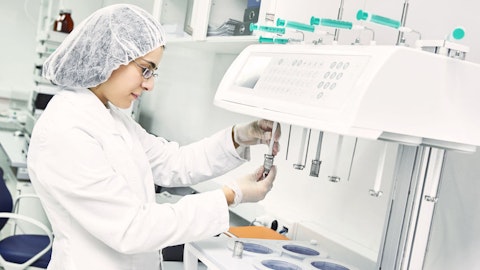Len Yaffe: Thank you very much. Hi, Mike. I want to ask you a question about AP13 bond (sic) [APP13007] and I was wondering, I was very excited to hear you talk about the dry eye application because that’s seemingly a very large market. Could you discuss to the extent you have data in the U.S. the size of that market? How much of it is Xiidra and Restasis versus over-the-counter drops? And you mentioned initially you’ll be competing in the acute dry eye segment. How big of the total dry eye market is that? And it seems like this would be a perfect drug to be put in the Gen 2 Optejet device. How much more do you think that could potentially expand the use of the drug, given that you’d have it available in Optejet? Thanks so much.
Michael Rowe: Thank you, Len, and I think I’m going to steal that AP13 bond from now on. It’s easier to say. We think it’s a tremendous opportunity, and let me start with why in the Optejet, and I’ll go back to when we talked to the FDA about differentiating the Optejet from an eye drop. One of the issues with steroids as a class is that, historically, when you use them for an extended period of time, they can cause something called an IOP spike, which is a transient intraocular pressure increase, which you don’t want to see in patients who are sensitive, like patients who have glaucoma. So the FDA is very concerned about that. Now, clobetasol, the formulation we have in clinical trials, we only saw that in one patient out of 180, which is basically the same as you would see in the general population without drug.
So we think this is a particularly good drug for dry eye, because you don’t see the IOP spike to begin with. But the benefit of using the Optejet is because you’re delivering one-quarter to one-fifth of dose, is that if these IOP spikes are related to dosing, you should see it even less, which would be the additional benefit, while still getting the dry eye pain and inflammation relief. So that’s why we want to put it into the Optejet to get that additional benefit. As for the market opportunity for people who are on Cyclosporine or Restasis or on Lifitegrast, many of you know that that’s not enough and you’re still using artificial tears and you’re still having problems. So this would be a product, if approved, that you would use for those times where it’s getting just a little bit too much and you need something for 14 weeks to calm down the ocular surface.
In terms of market size, it doesn’t really compete with the other drugs. It’s used in addition to them from time-to-time. There are millions and millions of patients out there. So this could easily be a multi-billion-dollar opportunity for the right drug and we think we have something that is really special with a AP13 bond. Thank you.
Len Yaffe: Okay. And secondly, could you comment on when the MicroPine studies would be complete, either by Bausch or Arctic so the drug could be ready for filing, given that that market, especially post-pandemic and younger folks spending so much time on their cell phones either texting or playing video games, so the incidence of progressive myopia is increasing. It seems like it’s a very large market.
Michael Rowe: Yeah. I can’t speak for either of those companies as they’re operating their own studies. I can tell you that in previous conversations, I know that they would like to finish their enrollment in 2024, so assuming that’s the case, it’s three years to an efficacy endpoint, after that which would take you to the end of 2027, so I think any kind of filing would probably be in 2028.




